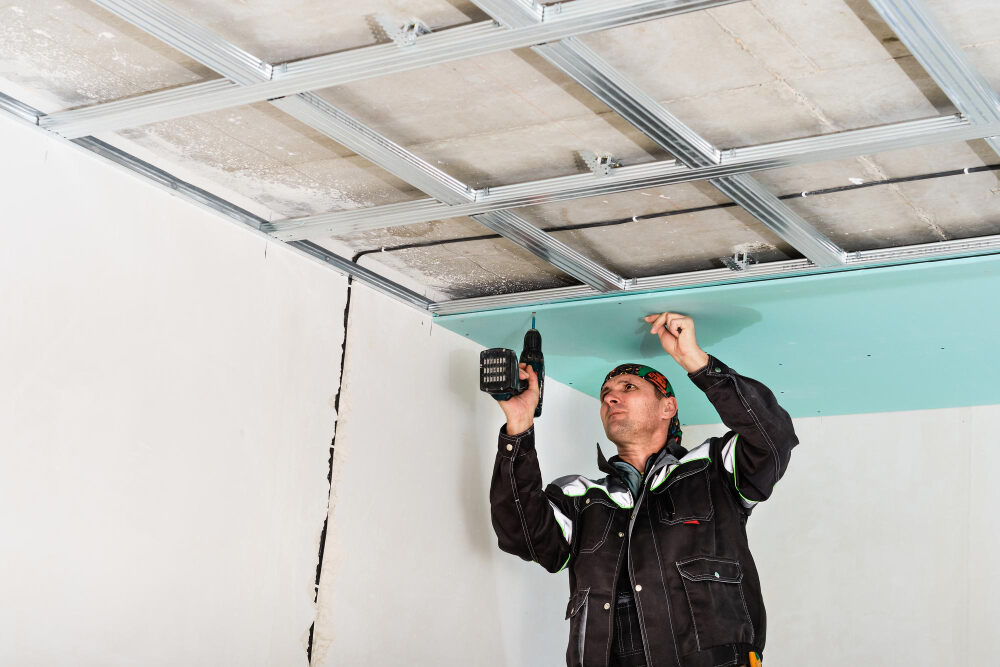If you’re renovating or building new walls, you may encounter metal studs instead of traditional wood framing. Metal studs are widely used in commercial construction and are becoming increasingly popular in U.S. homes because they’re lightweight, fire-resistant, and won’t warp or attract termites.
But when it comes to finishing walls, many DIYers wonder: How do you screw drywall to metal studs without problems like flexing, cracking, or loose screws?
This guide will walk you through exactly how to attach drywall to metal studs—from the tools you’ll need to best practices for fastening, finishing, and avoiding common mistakes.
Why Use Metal Studs for Drywall?
Before we dive into the process of screwing drywall to metal studs, let’s look at why builders often choose them:
- Durability: Unlike wood, metal studs won’t rot, twist, or split.
- Fire Resistance: Steel provides added protection compared to wood.
- Pest Resistance: Termites and carpenter ants won’t touch steel.
- Lightweight: Easier to handle and transport, especially for tall partitions.
The challenge? Metal studs are thinner and can flex more than wood, which means you’ll need the right screws, tools, and techniques to achieve a secure drywall installation.
Tools and Materials You’ll Need
To properly attach drywall to steel studs, you’ll want the right setup:
- Drywall sheets (standard 4×8 or 4×12 panels)
- Fine-thread drywall screws (#6 or #8, at least 1-inch long)
- Screw gun or drill with a drywall bit for depth control
- T-square or drywall square for marking cuts
- Utility knife (for scoring and snapping drywall)
- Mud pan & drywall knives (for finishing joints later)
- Stud finder or chalk line (for accurate screw placement)
- Drywall rasp (to smooth cut edges)
- Drywall lift or helper (optional, but useful for ceilings)
Having these tools ready before you begin makes the entire process smoother and faster.
How to Screw Drywall to Metal Studs (Step by Step)
Here’s the exact method pros use when screwing drywall to metal studs:
Step 1: Measure and Cut the Drywall
- Use a tape measure and T-square to mark your drywall sheet.
- Score the front side with a utility knife, snap it along the line, then cut the backing paper.
- Smooth edges with a drywall rasp to ensure snug, clean joints.
Pro Tip: Always cut on the face side of drywall for straighter edges.
Step 2: Position Drywall Against Metal Studs
- Start with sheets horizontally for walls (reduces seams) or lengthwise for tall partitions.
- Use a drywall lift or a helper to hold panels in place.
- Keep a ½-inch gap at the bottom of walls to avoid floor moisture transfer.
Step 3: Choose the Right Screws
When screwing drywall to metal studs, using the correct screw type is critical:
- Fine-thread drywall screws (not coarse-thread) grip thin steel studs securely.
- Length: At least 1 inch for single-layer drywall; 1¼–1⅝ inches for double-layer or thicker panels.
- Avoid wood screws—they won’t bite into metal.
Step 4: Screw Drywall to Metal Studs
- Drive screws every 12–16 inches along studs.
- Keep screws ⅜ inch from drywall edges to prevent cracking.
- Drive screws just below the surface—deep enough to dimple the paper but not so deep that the paper tears.
Pro Tip: Use a screw gun with depth control for consistent results.
Step 5: Prevent Flexing & Gaps
One challenge of screwing drywall to steel studs is their tendency to flex. Here’s how to avoid problems:
- Check stud alignment with a level before attaching drywall.
- Add bracing or blocking for long spans.
- For extra hold, apply construction adhesive between drywall and studs before screwing.
Step 6: Work Around Obstacles
Cut drywall carefully around outlets, switches, windows, and doors:
- Mark openings with a T-square or template.
- Use a rotary tool or keyhole saw for precise cuts.
- Leave slight clearance so cover plates and trim fit easily.
Step 7: Finish the Drywall
Once all sheets are secured, it’s time to tape and mud:
- Tape the Joints: Apply joint compound, press tape into seams, and smooth.
- Apply Second Coat: Feather edges 6–8 inches past the tape.
- Add Corner Beads: Use metal or vinyl beads on outside corners.
- Final Coat & Sanding: Apply a thin third coat, then sand for a seamless surface.
At this stage, your drywall is ready for priming and painting.
Key Differences: Drywall on Metal Studs vs. Wood Studs
If you’re used to wood framing, here’s what to expect when screwing drywall to metal studs:
- Screw Type: Fine-thread screws for steel, coarse-thread for wood.
- Flexibility: Metal studs flex more, so add bracing when needed.
- Cutting: Steel studs cut with snips, not saws.
- Soundproofing: Metal studs can carry more sound; consider insulation for noise control.
Common Mistakes to Avoid
Even experienced DIYers slip up when learning how to attach drywall to metal studs. Avoid these errors:
- Using the wrong screws: Coarse-thread won’t hold in steel.
- Overdriving screws: Breaks drywall paper, reducing holding strength.
- Skipping bracing: Leads to wavy, uneven walls.
- Poor screw spacing: Leaves drywall loose and prone to cracks.
- Not checking stud alignment: Misaligned studs cause gaps at seams.
Pro Tips for Success
- Always start fastening at the center of the sheet and work outward.
- Use longer screws for multiple layers of drywall.
- For ceilings, place screws closer together (every 12 inches).
- Shine a work light at an angle across the wall to spot imperfections before sanding.
- If working alone, rent a drywall lift—it saves time and your back.
FAQs About Screwing Drywall to Metal Studs
What screws should I use for drywall on metal studs?
Use fine-thread drywall screws (#6 or #8). They bite into thin steel better than coarse-thread screws.
Can I use wood screws for metal studs?
No. Wood screws won’t grip steel and can strip out, leaving drywall loose.
How far apart should screws be when attaching drywall to metal studs?
Place screws every 12 inches on ceilings and 16 inches on walls for secure attachment.
Do I need adhesive when attaching drywall to steel studs?
Not required, but using construction adhesive along with screws reduces movement and squeaks.
What’s the hardest part of screwing drywall to metal studs?
Managing stud flexing. Adding blocking or bracing helps create a sturdier wall.
Conclusion: Mastering Drywall on Metal Studs
Learning how to attach drywall to metal studs is a valuable skill for both homeowners and contractors. While the process is similar to wood framing, the key differences—like using fine-thread screws and handling stud flex—make all the difference in achieving a professional finish.
To recap:
- Use fine-thread screws designed for metal studs.
- Space screws every 12–16 inches, keeping them just below the drywall surface.
- Brace studs to reduce flexing and ensure smooth walls.
- Finish with proper taping, mudding, and sanding for a seamless look.
By following these steps, you’ll not only know how to screw drywall to metal studs but also gain the confidence to tackle projects in both residential and commercial spaces. Done right, your walls will be sturdy, smooth, and ready to stand the test of time.

